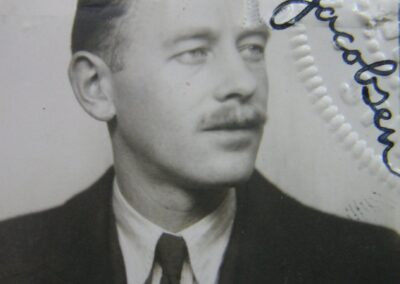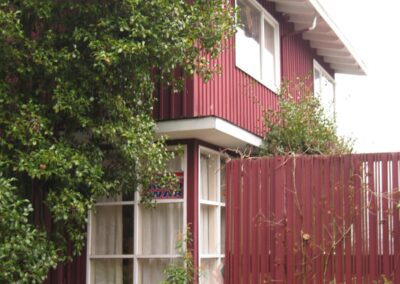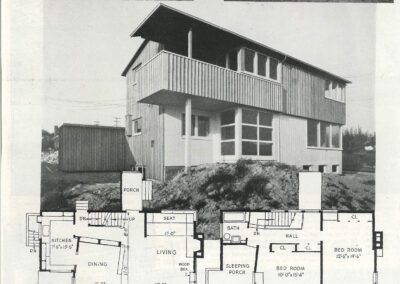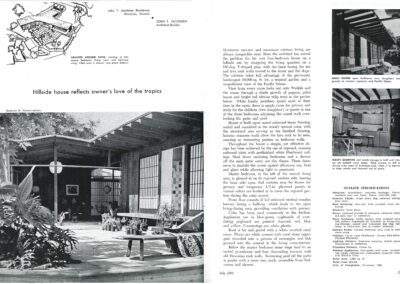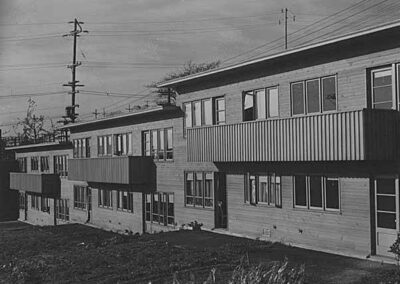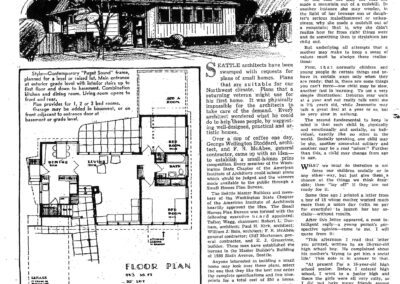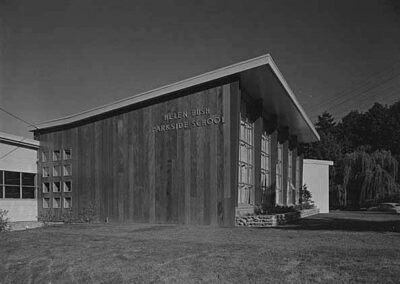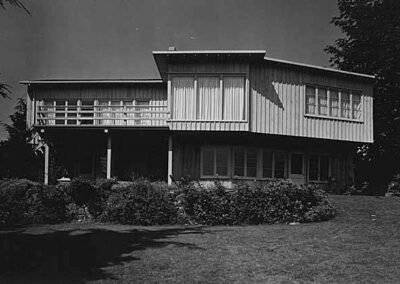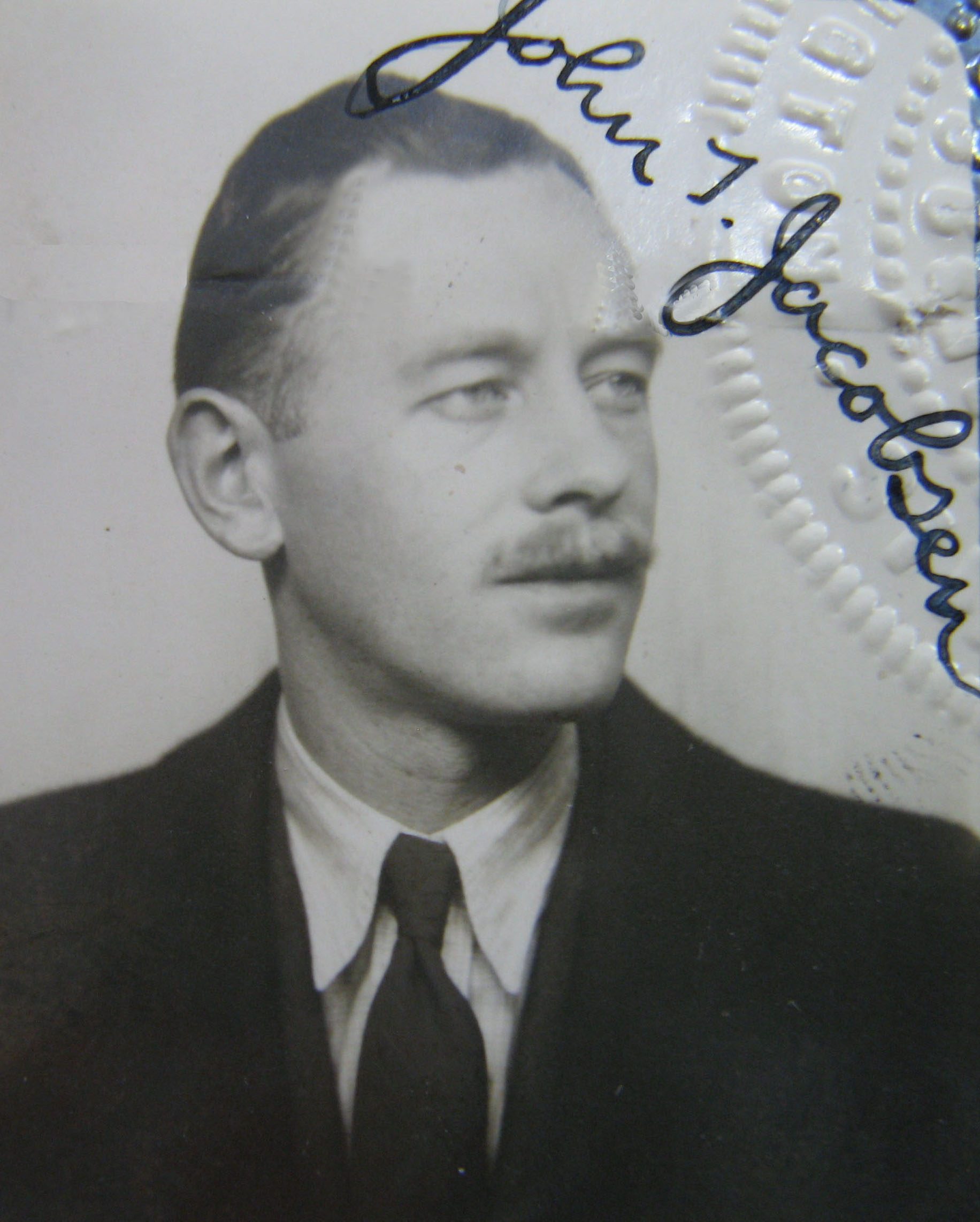
Jacobsen, John T.
(1903 – 1998)
Born and raised in Seattle, John Theodore “Ted” Jacobsen received his formal architectural training at the University of Washington and the University of Pennsylvania, where he received a Master’s degree in 1926.
Upon graduation, he worked in Russia designing several community schools. Afterwards he traveled extensively throughout Europe, South America, and Africa. During the Depression, Jacobson reportedly worked in New York City and served as an on-site architect for the original restoration of Colonial Williamsburg.
Upon returning to Seattle, Jacobsen taught at the University of Washington for several years. He was an avid and accomplished artist and studied fresco painting at Fontainebleau in Paris. Among his more well-known artistic works are the large bas-relief murals in the 1935 wing of the Suzzallo Library at the University of Washington, interior murals at the Everett Public Library (1934) and frescoes at the Seattle Trust Court Building (1977).
Jacobsen’s work, which helped set the groundwork for Pacific Northwest modernism, was featured in a variety of publications including Progressive Architecture, Pencil Points and Pacific Architect & Builder. Later he formed a partnership with Victor N. Jones. Jacobsen’s best-known projects in Seattle included his own Madison Park home (ca. 1936), the George Horton House (1938), the Armbruster House (1946), Helen Bush Parkside School’s Miller Hall (c. 1948), Gerberding Hall (1949) on the University of Washington campus, the Andrew Gunby House (1939), the Dr. C.E. Strother House (c. 1939), and the Goslin House (1939). During the Depression, Jacobsen teamed up with a select group of architects to create the Yesler Terrace Housing Project (1939-1941) in Seattle. Jacobsen served as principal designer for the project.
Later in life, Jacobsen often worked with Seattle developer Lloyd Martin to design some of Honolulu’s first high-rise buildings, such as the Rosalie Apartments, the Admiral Cook Apartment Hotel in Waikiki, and the Town House Apartments.
After sailing to Hawaii with his family, Jacobsen remained in the state and worked as local supervising architect for the John Graham & Co. firm on the original Ala Moana Shopping Center (1959) and the Ilikai Hotel (1964). He then established his own firm in Hawaii, specializing in projects with difficult lots. Among his most notable projects in Hawaii were Sea Life Park and its research facilities, the Winnie Units at Punahou School, and aviator Charles Lindbergh’s home on the Hana coast (1971).
Active in a variety of civic affairs, Jacobsen undertook a survey of historic churches in Maui and became the resident expert on historic buildings for the Bishop Museum. In 1974, he traveled throughout the islands registering many buildings for listing on the National Register of Historic Places. Among his most important work was creating the Lahaina Architectural Style Book for the Lahaina County Historic Commission which set the design standards for architecture, signs, lamp posts, etc. for the town of Lahaina in 1969.
Jacobsen passed away in Hawaii on March 5, 1998. Many of his drawings, including his work in Seattle, have been archived at the University of Hawaii, Manoa, Library.
– Michael C Houser
Yessler Terrace Housing Project | Seattle
Built 1943 | Source: University of Washington Special Collections
